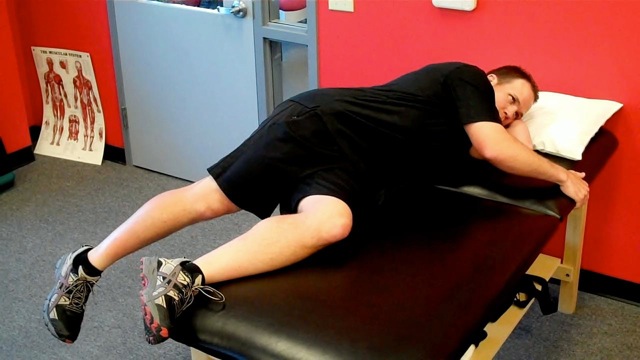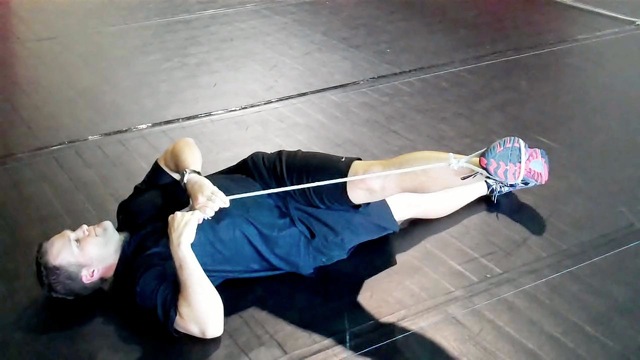
In the previous column, I addressed soft tissue mobilization. Immediately following proper release, I suggest incorporating stretching to improve TFL and ITB mobility. I have included two self stretches that can be done using a treatment table and a rope or stretch strap.
Execution:
Execution:
|
|
|
|
You can opt for sustained stretches of 20-30 seconds or do sets of 10 holding each stretch for 2-3 seconds at end range. Again, attempt slightly different angles to locate the optimal stretch position. This stretch tends to provide more tissue elongation as you can generate overpressure that is not possible with the table stretch.
Additional Notes:
Some prefer to begin training sessions with foam rolling and stretching, while others choose to conclude with this. I find both methods to be useful. However, if soft tissue restriction and limited mobility is the primary concern, I suggest addressing it before commencing with training in order to promote optimal tissue length and neuromuscular function.
In addition to these stretches, keep in mind that gluteal stretching is also important since the gluteus maximus attaches directly to the IT band. These stretches should not reproduce knee or hip pain at any time, and if they do your client should seek further medical evaluation.
Brian Schiff, PT, CSCS, is a licensed physical therapist, respected author and fitness professional. Currently, he serves as the supervisor at the Athletic Performance Center in Raleigh, NC. Brian presents nationally at several professional conferences and seminars on injury prevention, rehab and sport-specific training. For more cutting edge training information, subscribe to his monthly Training & Sports Medicine Update at www.BrianSchiff.com.
Additional Notes:
Some prefer to begin training sessions with foam rolling and stretching, while others choose to conclude with this. I find both methods to be useful. However, if soft tissue restriction and limited mobility is the primary concern, I suggest addressing it before commencing with training in order to promote optimal tissue length and neuromuscular function.
In addition to these stretches, keep in mind that gluteal stretching is also important since the gluteus maximus attaches directly to the IT band. These stretches should not reproduce knee or hip pain at any time, and if they do your client should seek further medical evaluation.
Brian Schiff, PT, CSCS, is a licensed physical therapist, respected author and fitness professional. Currently, he serves as the supervisor at the Athletic Performance Center in Raleigh, NC. Brian presents nationally at several professional conferences and seminars on injury prevention, rehab and sport-specific training. For more cutting edge training information, subscribe to his monthly Training & Sports Medicine Update at www.BrianSchiff.com.
 Begin in side lying as close to the edge of the table as possible. Flexing the bottom leg generally allows for easier clearance and adduction of the top leg. Next extend the top thigh beyond the body and slowly allow it drop down past the edge of the table. The stretch leg can be straight or flexed, but seek the best angle for optimal stretching. Hold for 20-30 seconds and repeat 2-3 times
Begin in side lying as close to the edge of the table as possible. Flexing the bottom leg generally allows for easier clearance and adduction of the top leg. Next extend the top thigh beyond the body and slowly allow it drop down past the edge of the table. The stretch leg can be straight or flexed, but seek the best angle for optimal stretching. Hold for 20-30 seconds and repeat 2-3 times Begin supine with a rope (or strap) placed around the mid-foot. Next, slowly pull the leg up and across the body until a good stretch is felt across the outer hip and IT band. Keep both scapulae flat against the floor to minimize upper torso rotation.
Begin supine with a rope (or strap) placed around the mid-foot. Next, slowly pull the leg up and across the body until a good stretch is felt across the outer hip and IT band. Keep both scapulae flat against the floor to minimize upper torso rotation.















